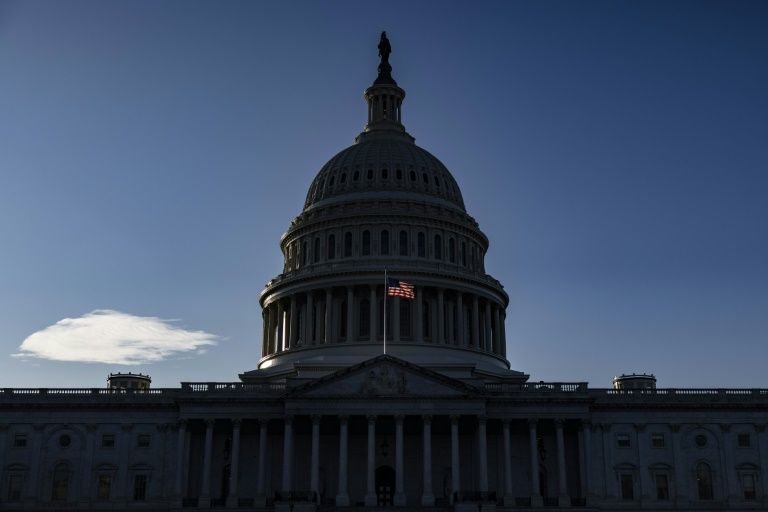US lawmakers reach deal on $900 bn stimulus package
Washington (AFP) – US lawmakers reached a deal Sunday for a nearly $900 billion Covid-19 relief package for millions of Americans as the nation struggles against the world’s largest outbreak of the virus.
The package is expected to include aid for vaccine distribution and logistics, extra jobless benefits of $300 per week, and a new round of $600 stimulus checks — half the amount provided in checks distributed last March under the CARES Act.
“We’ve agreed to a package of nearly $900 billion. It is packed with targeted policies to help struggling Americans who have already waited too long,” Republican Senate leader Mitch McConnell said in a statement.
Democratic House Speaker Nancy Pelosi and Senate minority leader Chuck Schumer confirmed an agreement had been reached with Republicans and the White House on a deal that “delivers urgently needed funds to save the lives and livelihoods of the American people as the virus accelerates.”
Congress was working under a deadline of midnight Sunday — needing to reach consensus both on assistance to hard-pressed American households and companies and on the 2021 federal budget in order to avoid a government shutdown.
Number two Democrat in the House of Representatives, Steny Hoyer, said he expected the deal to pass on Monday and then head to the Senate.
This will require passage of a stopgap measure by midnight Sunday to keep the federal government funded an extra 24 hours and avert a shutdown.
“The House will move swiftly to pass this legislation immediately, so it can quickly be sent to the Senate and then to the President’s desk for his signature,” Schumer and Pelosi said in a statement.
“With the horrifying acceleration of daily infections and deaths, there is no time to waste.”
– Facing possible shutdown –
The new deal is expected to maintain the central bank’s ability to set up emergency lending programs without congressional approval, according to The Wall Street Journal, but the Fed would require approval to restart existing CARES Act programs once they expire at the end of this year.
Republicans had sought to limit the Fed’s ability to provide credit for businesses and other institutions, claiming Democrats were trying to use the legislation to create a “slush fund” for state and local governments they control.
Democrats argued that restricting the bank’s powers could compound the fiscal crisis and hamper the ability of the incoming Joe Biden administration to boost the ailing US economy.
Schumer confirmed earlier Sunday that a deal had been reached to drop “dangerous language tying the Fed’s hands to respond to crises.”
– ‘Get It Done’ –
Democrats and Republicans have been trading blame for months over the failure to reach a deal on this second relief plan — and continued to do so even after the deal was agreed on Sunday.
Even as the pandemic continues to take a record toll in US cases and deaths, the economy has been gravely battered, with jobless numbers rising in the past two weeks.
Making matters still worse, millions of Americans were set to lose jobless benefits after Christmas, even as federal moratoriums on evictions and on repayment of student loans are to expire at the end of the month.
New assistance for struggling businesses and the unemployed is seen as critical to getting the world’s biggest economy back on its feet, even as new vaccines offer hope that an end to the pandemic may be in sight.
The initial $2.2 trillion package passed in March was credited with preventing a much more severe economic downturn.
It included huge amounts to rescue American companies, including $377 billion in grants to small businesses to pay workers and rent, $500 billion for loans to larger businesses and states and nearly $600 billion in tax breaks and deferrals.
But critics said too much assistance went to big corporations and not enough to ordinary Americans and small businesses.
On Wednesday, Fed chairman Jerome Powell had stressed the high risk that countless small businesses could go bust in the absence of new federal aid.
The Fed has estimated that the jobless rate will end the year at 6.7 percent before dipping to 5 percent next year — still a long way from the 3.5 percent registered in February.
Disclaimer: Validity of the above story is for 7 Days from original date of publishing. Source: AFP.


